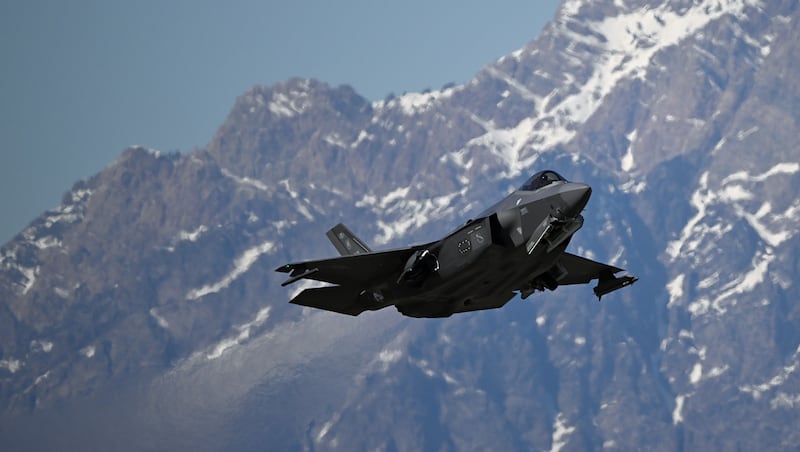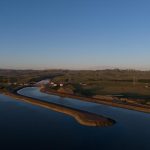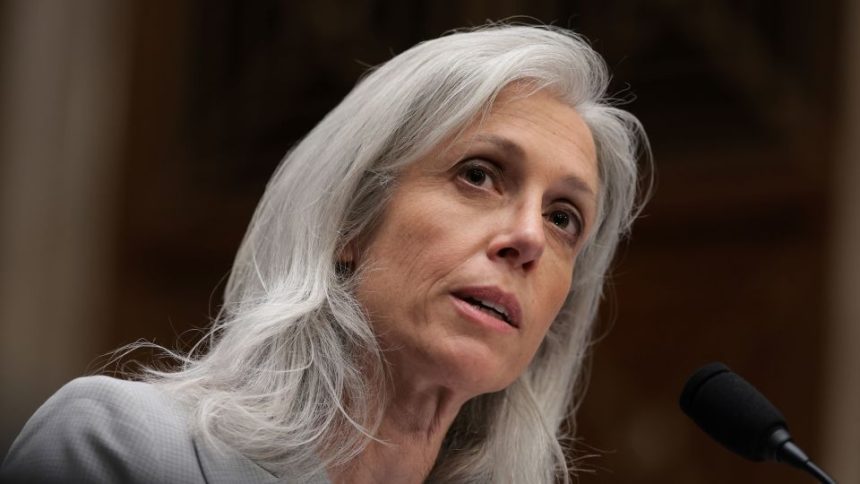WASHINGTON — Nearly $60 million for Air Force repairs. Tens of millions of dollars for various water projects. Investments in dozens of law enforcement offices. That’s a glimpse into some of the funding requests submitted by Utah lawmakers for next year’s congressional budget.
As lawmakers prepare to return to Capitol Hill next week for the first time since late July, they have a growing list of to-do items waiting for them. Top of the batch: Approving the budget for the 2026 fiscal year before the Oct. 1 deadline.
As part of the appropriations process, lawmakers are permitted to submit community-centric requests for their districts or home states that would be covered in a specific budget for different federal agencies. Lawmakers often receive these requests from constituents before undergoing a rigorous review process.
“My team and I carefully review applications from local government entities and select projects that will best return federal dollars to Utah communities,” Rep. Blake Moore, R-Utah, told the Deseret News in a statement. “Criteria include demonstrated community support and regional impact, and we work directly with applicants to develop strong submissions to the Appropriations Committee.”
These requests, known as earmarks, can include money for local projects, institutions or programs that are then reviewed by congressional committees to ensure they comply with transparency requirements.
The Deseret News reviewed each Utah lawmaker’s earmark requests, which covered a variety of areas such as water, law enforcement, public safety, road repairs and more. Here are some of the highlights.
Hill Air Force Base repairs for F-35 jets
Moore filed a number of requests in his earmarks, but the biggest submission by far was his request for more than $59 million to go toward Hill Air Force Base’s maintenance and repair of cockpit canopies used for F-35 fighter aircraft.
F-35A Lightning II Demonstration Team commander Capt. Melanie “Mach” Kluesner’s plane sits on the tarmac as she talks about flying the F-35 and then demonstrated its capabilities on Tuesday, March 19, 2024. | Scott G Winterton, Deseret News
The money would go toward constructing a facility with enclosed loading docks, administrative office space, fire detection and suppression capabilities, adequate parking lots, site lighting, communication systems, and more.
Moore justified the request by citing a growing number of F-35 aircraft arriving at Hill Air Force base to undergo repairs and modifications, raising the need for a world-class facility. By relocating and consolidating the workspace for F-35 repairs, Moore argued, it would reduce energy consumption and operating costs.
Sen. John Curtis, R-Utah, also had a request for $59,410 to go toward the proposed facility, stating simply on his senator webpage the money would go toward “the maintenance and repair of low observable canopy assemblies associated with F-35 fighter aircraft.“ It did not state Hill Air Force Base specifically as the recipient, but his request notes the facility is in Davis County.
Public transit to support Winter Olympic Games
Moore also submitted a $5 million request to go toward upgrades to the Trax light rail system, particularly for the replacement of aging light rail vehicles.

A TRAX train arrives at the downtown station in Salt Lake City on Monday, Aug. 25, 2025. | Scott G Winterton, Deseret News
Moore argued the upgrades were necessary to ensure “accessibility, reliability, and system readiness” — especially when the Beehive State hosts the Winter Olympic Games in 2034. The money would specifically go toward replacing 20 high-floor rail vehicles with low-floor vehicles, which typically ensures faster boarding times and increased accessibility to more city stops.
Preserving Great Salt Lake and boosting other lake capabilities
Rep. Mike Kennedy, R-Utah, submitted a request to allocate $5 million toward the Utah Lake Authority, which oversees the preservation of Utah Lake by balancing the lake’s ecological health with recreational activities.

Jackson Moorehead fishes in Utah Lake at American Fork Boat Harbor in American Fork on Monday, June 30, 2025. | Kristin Murphy, Deseret News
The money would go toward constructing a Utah Lake Research Center focusing on environmental challenges such as algal blooms, water scarcity and invasive species. The center would also focus on ensuring the lake stays healthy in order to preserve the Great Salt Lake.
Utah Lake is connected to the Jordan River, which then flows water into the Great Salt Lake — Utah’s largest lake that has been at risk of shrinking over the last several years, putting the surrounding ecosystem at risk.
Kennedy argues Utah Lake could similarly provide “a major economic engine” for Utah County, but points to the challenges of fluctuating water levels and harmful algal blooms as obstacles.
Law enforcement and military support
Every Utah lawmaker who submitted earmark requests submitted at least one monetary proposal related to local law enforcement or public safety. With all members combined, they requested more than $52 million, according to a review by the Deseret News.

Layton Police Department Lt. Kyle Schroeder, center; Sgt. Mike Beavers, left; and officer Josh Johnson do a demonstration on police motorcycles during the first Find Yourself in Utah Law Enforcement Career Day held outside the Peace Officers Standards and Training (POST) Center on Salt Lake Community College’s Miller Campus in Sandy on Wednesday, April 30, 2025. | Isaac Hale, Deseret News
Curtis also included multiple requests for the Utah Defense Alliance, including one to allocate $41,000 toward providing housing for National Guardsmen during training. The UDA specializes in supporting Utah’s military missions and workloads while developing future projects.
And … nothing
Every member of Utah’s congressional delegation submitted earmark requests — all but Sen. Mike Lee.

Sen. Mike Lee, R-Utah, speaks during the Utah Republican Party’s state organizing convention held at the UCCU Center in Orem on Saturday, May 17, 2025. | Isaac Hale, Deseret News
Lee has long opposed earmark requests, claiming they can be misused to approve funds without merit-based requirements or a competitive allocation process. When earmarks are approved by individual committees, they are tucked into the larger funding bill that is typically sent to Congress as one giant package.
That means earmarks are not individually approved by every lawmaker and are instead tied to the larger bill to avoid a government shutdown.
Lee has repeatedly pushed to ban earmarks from being considered in Congress, pointing to the Republican-controlled Congress in 2019 that banned the practice — although that ban was later overturned.
How do these earmarks play into appropriations?
Congress must pass a budget every year that approves spending for federal government agencies. The process typically drags out weeks beyond the original deadline due to partisan differences and competing interests — often resulting in temporary extensions of current spending levels until a new budget is enacted.
That’s what happened last year when lawmakers punted the appropriations bill to early March, hoping to avoid the issue until party leaders knew who would be in control of Congress and the White House. Then it happened again when Republicans, then in total control of Washington, decided to extend funding levels enacted by President Joe Biden until this fall.
Now, lawmakers are faced with the same challenges — prompting some Republicans to propose extending those Biden-era spending levels once again until next October. But that could put some community projects at risk that are typically folded in with the annual appropriations process.













